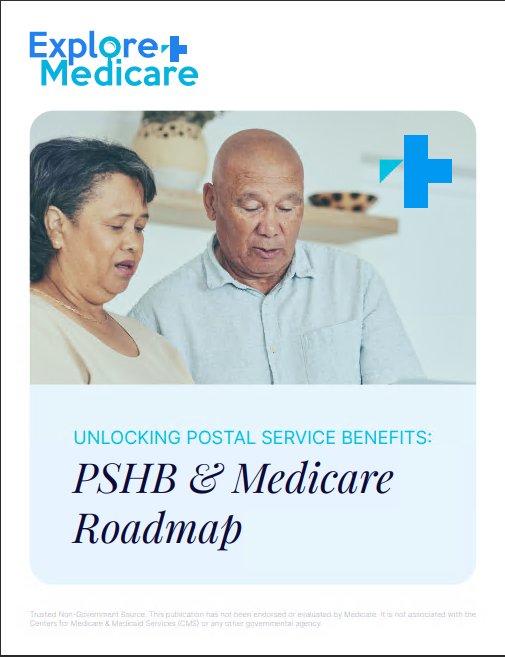Key Takeaways
-
Medicare enrollment for 2025 involves several specific periods, each tailored for different circumstances. Knowing when to enroll ensures you avoid late penalties and maintain continuous coverage.
-
Medicare provides coverage through Parts A, B, C, and D, each with unique enrollment rules and requirements. Preparing your documents and understanding your eligibility simplifies the process.
Understanding Medicare Enrollment Basics
Medicare enrollment in 2025 might seem overwhelming at first, but breaking it into manageable steps helps. Medicare is designed to offer comprehensive health coverage for individuals aged 65 and older or for those with specific disabilities. Whether you’re enrolling for the first time or making changes, knowing the enrollment periods and eligibility requirements is essential.
Key Enrollment Periods You Should Know
Initial Enrollment Period (IEP)
The Initial Enrollment Period is your first opportunity to enroll in Medicare. This seven-month window begins three months before your 65th birthday, includes the month of your birthday, and extends three months after. If you enroll during the first three months, your coverage starts on the first day of your birthday month. Waiting until the later months can delay your coverage.
General Enrollment Period (GEP)
Missed your Initial Enrollment Period? The General Enrollment Period runs annually from January 1 to March 31. Enrollment during this time activates your coverage starting July 1, but you may face late enrollment penalties, particularly for Part B and Part D.
Special Enrollment Period (SEP)
Life happens, and Medicare accommodates this through Special Enrollment Periods. SEPs allow you to enroll or make changes outside regular periods due to events like losing employer coverage, moving, or gaining Medicaid eligibility. The timing and rules for SEPs depend on the specific event.
Annual Enrollment Period (AEP)
From October 15 to December 7 each year, you can switch plans, join new ones, or drop coverage. Changes take effect on January 1. This period is ideal for evaluating your current plan and ensuring it meets your health and financial needs.
Medicare Advantage Open Enrollment Period (MA OEP)
Between January 1 and March 31, if you’re enrolled in a Medicare Advantage Plan, you can make a one-time change to another Advantage Plan or return to Original Medicare. This flexibility lets you adjust your coverage if your current plan isn’t meeting your expectations.
Who Should Enroll and When?
Turning 65 This Year
If you’re celebrating your 65th birthday in 2025, it’s time to get started. Enroll during your Initial Enrollment Period to avoid delays and penalties. For those already receiving Social Security benefits, enrollment in Parts A and B happens automatically.
Younger Individuals With Disabilities
Medicare isn’t just for older adults. If you’ve received Social Security Disability Insurance (SSDI) for at least 24 months, you automatically qualify for Parts A and B. Individuals with end-stage renal disease (ESRD) or amyotrophic lateral sclerosis (ALS) may also qualify.
Working Past 65
If you’re still employed and covered by a group health plan, you may qualify for a Special Enrollment Period when you retire or lose your job-based coverage. Make sure to coordinate your benefits to avoid gaps in coverage.
Simplifying the Enrollment Process
Gather Your Documents
Before enrolling, prepare essential documents like your Social Security number, proof of age, and employer coverage information if applicable. Having these on hand ensures a smoother application process.
Decide on Coverage Options
Medicare coverage includes:
-
Part A (Hospital Insurance): Covers inpatient care, skilled nursing, and hospice care.
-
Part B (Medical Insurance): Covers outpatient services, preventive care, and some medical equipment.
-
Part C (Medicare Advantage): Bundles Parts A and B, often including Part D.
-
Part D (Prescription Drug Coverage): Helps cover medication costs.
Enroll Online or In-Person
You can enroll online at the Social Security Administration’s website, by visiting your local Social Security office, or through mailed applications. The online process is straightforward and often the quickest.
Avoiding Common Pitfalls
Missing Deadlines
One of the most frequent mistakes is missing enrollment deadlines, which can lead to penalties. For example, not enrolling in Part B when first eligible results in a 10% penalty for each year you delay.
Overlooking Costs
While Medicare provides substantial coverage, it isn’t free. Familiarize yourself with premiums, deductibles, and copayments for each part. For 2025, the standard Part B premium is $185, and the deductible is $257. Understanding these costs helps you budget effectively.
Ignoring Coordination of Benefits
If you have other insurance, like employer coverage, learn how it coordinates with Medicare. This prevents unexpected expenses and ensures you’re fully covered.
Reviewing and Updating Your Coverage
During the Annual Enrollment Period
Each year, plans change. The Annual Enrollment Period is your chance to review your current plan against your health and financial needs. Consider factors like network providers, prescription drug coverage, and out-of-pocket costs.
After a Life Event
Life events such as moving, marriage, or loss of coverage can trigger Special Enrollment Periods. Be proactive in updating your information to maintain uninterrupted coverage.
Why Timely Enrollment Matters
Penalty Avoidance
Late enrollment penalties can add up over time, significantly increasing your costs. Timely enrollment ensures you don’t pay more than necessary.
Access to Comprehensive Care
By enrolling on time, you guarantee access to the healthcare services you need, from preventive screenings to critical medical treatments. Missing the window could result in gaps in coverage.
Financial Planning
Knowing your costs in advance helps with effective financial planning. Medicare’s predictable costs are an asset when managing your healthcare expenses.
Wrapping Up Your Medicare Journey
Medicare enrollment in 2025 doesn’t have to be daunting. By understanding the timelines, preparing your documents, and choosing the right plan, you can navigate the process smoothly. Take advantage of enrollment periods to secure the coverage that best suits your health needs. Whether it’s your first time enrolling or you’re making adjustments, a proactive approach ensures you’re covered for the year ahead.









